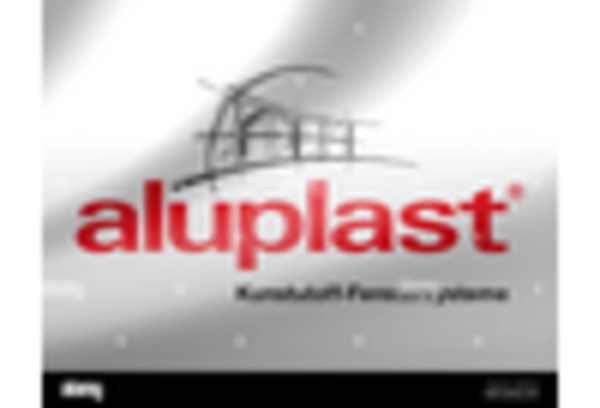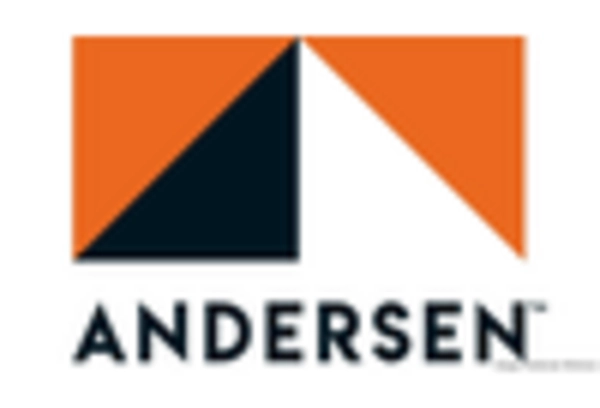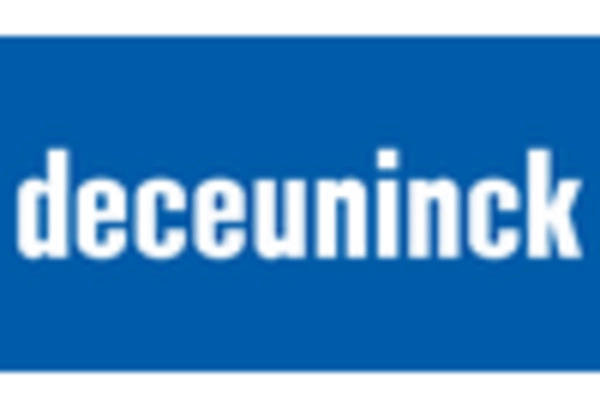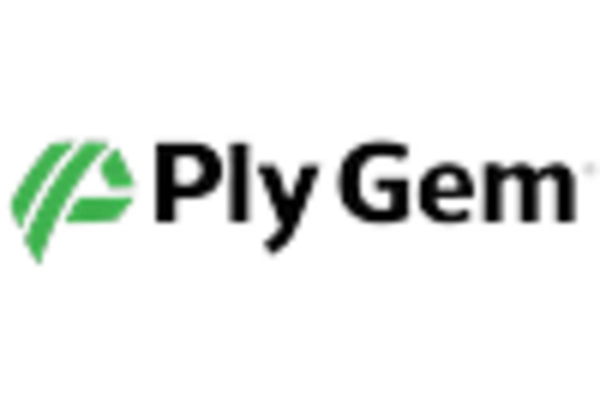Customization Trends
Customization trends are emerging as a significant driver in the PVC Window Market. Consumers are increasingly seeking personalized solutions that cater to their specific aesthetic and functional requirements. This demand for tailored products is prompting manufacturers to offer a wider range of designs, colors, and finishes. The ability to customize windows not only enhances the visual appeal of residential and commercial properties but also allows for improved energy efficiency and performance. Market data indicates that customized window solutions could account for nearly 30% of total sales in the PVC Window Market by 2026. This trend underscores the importance of flexibility and consumer choice in driving market growth.
Sustainability Focus
The PVC Window Market is increasingly influenced by a growing emphasis on sustainability. Consumers and manufacturers alike are prioritizing eco-friendly materials and energy-efficient products. This shift is driven by heightened awareness of environmental issues and the need for sustainable building practices. As a result, manufacturers are investing in the development of recyclable PVC materials and energy-efficient window designs. The market for energy-efficient windows is projected to grow significantly, with estimates suggesting a compound annual growth rate of over 5% in the coming years. This trend not only aligns with regulatory requirements but also meets consumer demand for greener alternatives, thereby propelling the PVC Window Market forward.
Regulatory Compliance
Regulatory compliance is a critical driver in the PVC Window Market, as governments worldwide are implementing stringent building codes and energy efficiency standards. These regulations often mandate the use of energy-efficient materials and construction practices, compelling manufacturers to adapt their product offerings accordingly. Compliance with these standards not only ensures market access but also enhances the credibility of manufacturers. The demand for compliant PVC windows is expected to rise, with estimates suggesting that the market for energy-efficient windows could reach a valuation of over $10 billion by 2027. This regulatory landscape is likely to shape product development and innovation within the PVC Window Market.
Technological Advancements
Technological advancements play a pivotal role in shaping the PVC Window Market. Innovations in manufacturing processes, such as automated production lines and advanced extrusion techniques, enhance efficiency and reduce costs. Furthermore, the integration of smart technologies into window systems, including sensors and automated controls, is gaining traction. These advancements not only improve the functionality of PVC windows but also contribute to energy savings and enhanced user experience. The market is witnessing a surge in demand for smart windows, with projections indicating a potential increase in market share by 10% over the next five years. This technological evolution is likely to redefine consumer expectations and drive growth in the PVC Window Market.
Urbanization and Infrastructure Development
Urbanization and infrastructure development are driving forces behind the PVC Window Market. As urban populations continue to grow, there is an increasing demand for residential and commercial buildings, which in turn fuels the need for high-quality window solutions. The construction sector is experiencing robust growth, with investments in infrastructure projects reaching unprecedented levels. This trend is particularly evident in emerging markets, where rapid urbanization is leading to a surge in new construction. Market analysts project that the demand for PVC windows will increase by approximately 15% in these regions over the next few years. This urban expansion presents a significant opportunity for the PVC Window Market to capitalize on the rising need for durable and energy-efficient window solutions.

















Leave a Comment